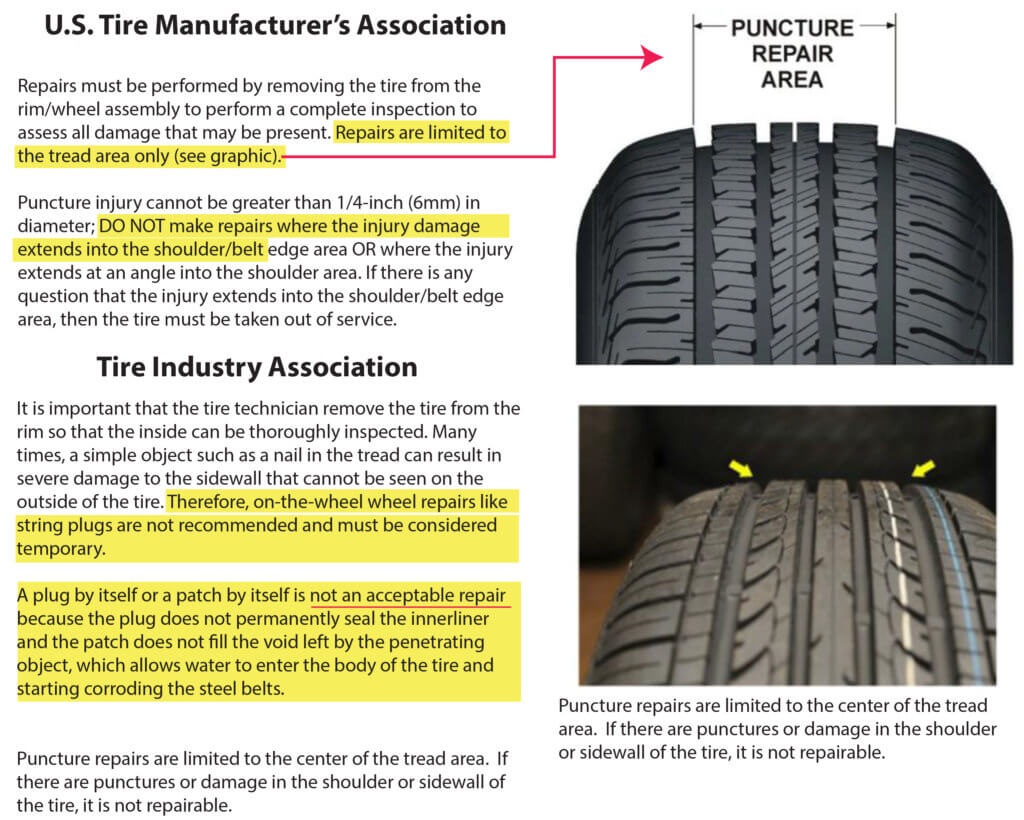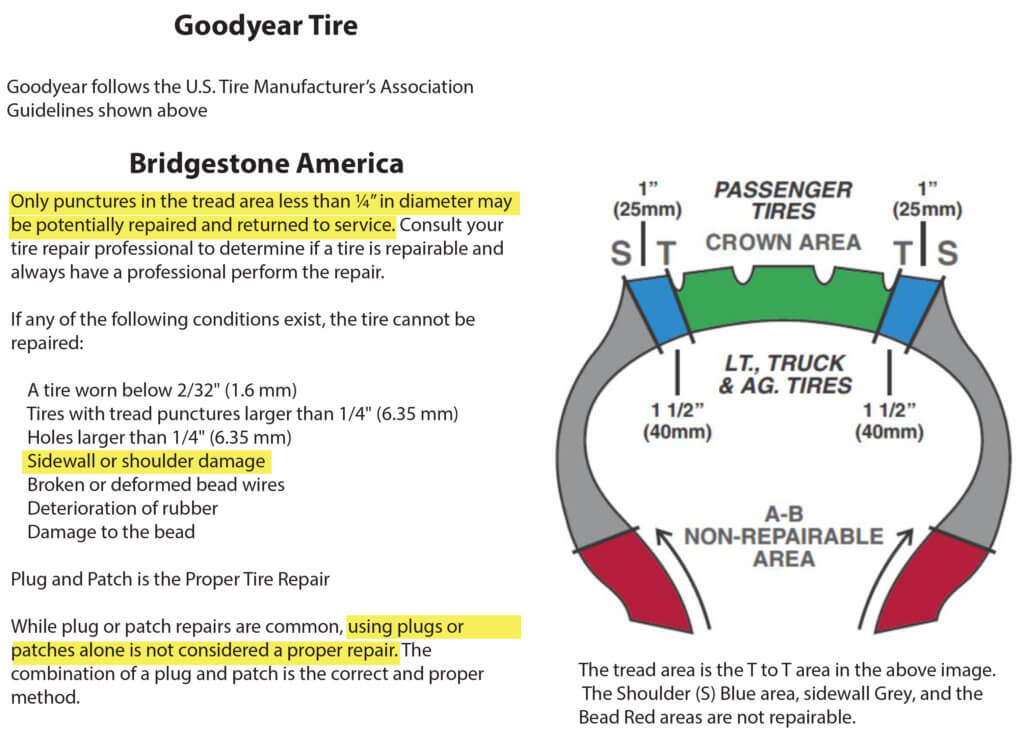Here are the most current tire repair guidelines
Why most tire shops won’t repair sidewall and tire shoulder punctures
Sidewall and tire should punctures are not allowed under the most current tire repair guidelines.
Shops follow the tire repair guidelines from the tire industry
That means they won’t repair punctures located in the sidewall or tire shoulder areas. The tire belts usually end at the last void in the puncture repair area shown in this diagram. So tire shoulder areas and sidewalls don’t have the same structural support as the tread area. In addition, the tire shoulder creates the most heat and flex, so plugs and patches don’t hold up well in those areas.


Answers to the most common tire repair questions
Can you repair a puncture in the tire shoulder area?
No. According to the tire repair guidelines published by the U.S. Tire Manufacturer’s Association, the Tire Industry Association, and most tire manufacturers, punctures can only be repaired in the tread/crown area. That excludes punctures in the tire shoulder, sidewall and bead areas.
Can you repair a puncture using a string or rope plug?
No. A plug is a temporary repair. It is unsafe to drive for long periods on a plugged tire. A proper repair requires removing the tire from the wheel to inspect for internal damage. Then it requires buffing the punctured liner so it can accept and adhere to a combination patch plug.
Everybody plugs tires and they work fine. Isn’t the industry just trying to sell repair services and new tires?
No. If you plug a tire without dismounting it, you don’t know the damage that may have occurred inside the tire
Think about the stresses on a plug-only repair. Because you haven’t removed the tire from the wheel, you have no idea what kind of internal damage exists inside the tire. If the liner puncture has a ragged edge. that will make it much harder for the plug and adhesive to bond. The same applies if there’s debris surrounding the puncture.
Plug-only repairs aren’t designed to handle the stress
If you skip the patch, you’re subjecting the plug to constant pressure; the 35-ish inflation pressure plus the added pressure when you hit an object or pothole. In simple terms, the air pressure inside the tire is constantly trying to “spit” the plug out.
When you perform a proper tire repair with a patch plug, the patch prevents tire pressure from exerting any outward force on the plug portion.
©, 2022 Rick Muscoplat
Posted on by Rick Muscoplat
